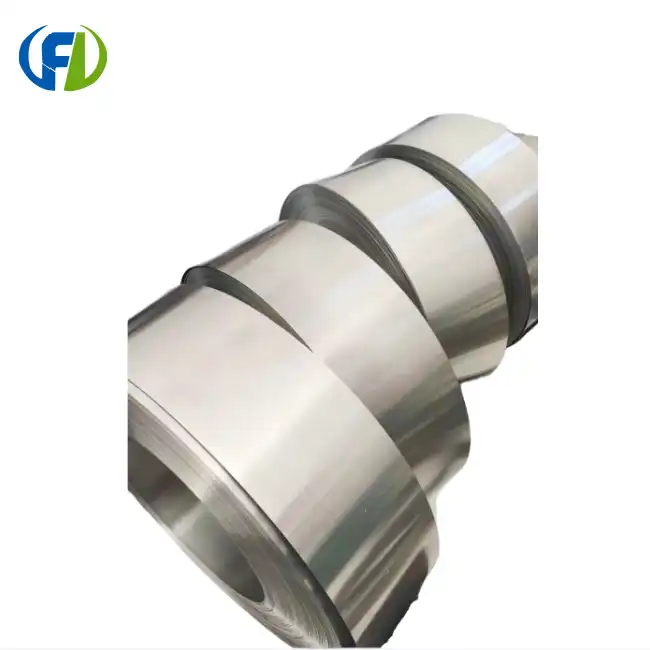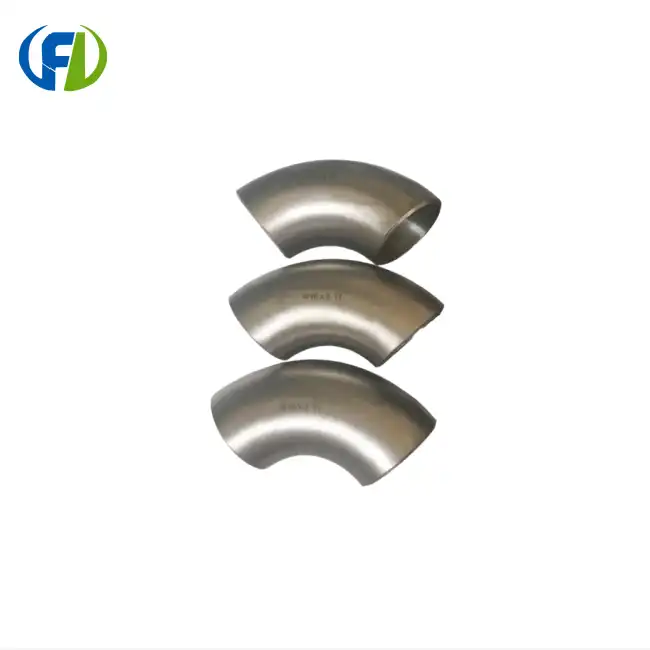How does zirconium's melting point compare to other refractory metals?
Zirconium's high melting point of 1852°C places it firmly within the category of refractory metals, but how does it stack up against its peers? Let's explore this comparison to gain a deeper understanding of zirconium's thermal properties.
Zirconium vs. Titanium
While both zirconium and titanium are known for their strength-to-weight ratio and corrosion resistance, zirconium outperforms titanium in terms of melting point. Titanium melts at approximately 1668°C, nearly 200°C lower than zirconium. This difference makes zirconium foil a superior choice for applications requiring extreme heat resistance.
Zirconium vs. Tungsten and Molybdenum
It is well known that molybdenum and tungsten have extraordinarily high melting points. Molybdenum melts at 2623°C, while tungsten has the highest melting point of any metal at 3422°C. In certain applications, zirconium is invaluable due to its unique mix of thermal resistance and other desirable qualities, despite having a lower melting point than these two metals.
Zirconium vs. Niobium and Tantalum
Niobium and tantalum, often used in similar applications as zirconium, have melting points of 2477°C and 3017°C, respectively. While these temperatures exceed that of zirconium, zirconium foil remains a preferred choice in many scenarios due to its lower density, excellent corrosion resistance, and nuclear properties.
This comparison highlights that while zirconium may not have the highest melting point among refractory metals, its unique combination of properties, including its respectable melting point, makes it an indispensable material in various high-temperature applications.
Melting behavior under vacuum vs. atmospheric conditions
The melting behavior of zirconium foil can vary significantly depending on whether it is melted under vacuum or atmospheric conditions. This difference is crucial for both scientific research and industrial applications.
Vacuum Melting
When melting zirconium foil in a vacuum environment, several notable phenomena occur:
- Reduced contamination: The absence of atmospheric gases minimizes the risk of impurities being introduced into the molten zirconium.
- Lower oxidation: Without oxygen present, the formation of zirconium oxide is significantly reduced, preserving the purity of the metal.
- Precise control: Vacuum conditions allow for more accurate temperature control and observation of the melting process.
- Potential for sublimation: In extreme vacuum conditions, zirconium may sublimate directly from solid to gas, bypassing the liquid phase.
Atmospheric Melting
Melting zirconium foil under atmospheric conditions presents different challenges and considerations:
- Oxidation risk: Zirconium readily reacts with oxygen at high temperatures, forming a protective oxide layer that can affect the melting process.
- Atmospheric contamination: Gases present in the atmosphere can be absorbed into the molten zirconium, potentially altering its properties.
- Higher energy requirement: The presence of atmospheric gases can lead to heat loss, requiring more energy to achieve and maintain the melting point.
- Safety considerations: Melting in air requires additional safety measures due to the potential for oxidation and combustion.
Understanding these differences is crucial for industries working with zirconium foil, as the melting environment can significantly impact the final product's properties and purity. For instance, vacuum melting is often preferred in the production of high-purity zirconium components for nuclear applications, where even trace impurities can have significant consequences.
Industrial implications of zirconium's high melting temperature
The high melting point of zirconium foil has far-reaching implications across various industries, enabling innovative applications and solutions to complex engineering challenges.
Nuclear Industry
In nuclear reactors, zirconium's high melting point is crucial:
- Fuel rod cladding: Zirconium alloys are used to encase nuclear fuel, withstanding extreme temperatures and radiation.
- Core structural components: The material's thermal stability ensures the integrity of reactor core structures.
- Waste containment: Zirconium-based materials are explored for long-term nuclear waste storage solutions.
Aerospace and Aviation
The aerospace industry leverages zirconium's thermal properties in several ways:
- Thermal barriers: Zirconium foil is used in multi-layer insulation for spacecraft and satellites.
- Rocket nozzles: Zirconium-based ceramics protect against the extreme heat of rocket exhaust.
- High-temperature sensors: Zirconium components are utilized in sensors for monitoring engine temperatures.
Chemical Processing
In chemical processing, zirconium's high melting point and corrosion resistance are invaluable:
- Reactor vessels: Zirconium-lined reactors can handle corrosive chemicals at high temperatures.
- Heat exchangers: Zirconium components in heat exchangers offer durability in aggressive environments.
- Distillation columns: The material's properties make it ideal for use in high-temperature distillation processes.
Emerging Technologies
Zirconium's unique properties are driving innovation in cutting-edge fields:
- Additive manufacturing: High-temperature 3D printing with zirconium-based materials is being explored for complex components.
- Energy storage: Zirconium compounds are investigated for use in next-generation batteries and fuel cells.
- Quantum computing: Zirconium-based superconductors are studied for potential applications in quantum circuits.
The industrial implications of zirconium's high melting point extend beyond these examples, continually opening new avenues for technological advancement and problem-solving in demanding environments. As research progresses, we can expect to see even more innovative applications of this remarkable material.
Conclusion
The exceptional melting point of zirconium foil, at 1852°C, positions it as a crucial material in various high-temperature applications across multiple industries. Its unique combination of thermal resistance, corrosion resistance, and other desirable properties makes it an invaluable resource for engineers and manufacturers working on cutting-edge technologies and challenging industrial processes.
For those seeking high-quality zirconium foil and other advanced materials, Baoji Freelong New Material Technology Development Co., Ltd. stands ready to meet your needs. Located in Baoji City, China's Titanium Valley, we specialize in the production and export of zirconium, titanium, nickel, niobium, tantalum, and various alloys. Our commitment to quality and service has earned us the trust of clients across Australia, Korea, Germany, the US, UK, Malaysia, Middle East, Taiwan, and beyond.
Whether you require zirconium foil for nuclear applications, aerospace components, or chemical processing equipment, we can provide the high-purity materials you need, customized to your specifications. Our state-of-the-art equipment and rigorous quality control ensure that every product meets the highest standards of performance and reliability.
To learn more about our zirconium foil products or to discuss your specific material requirements, please don't hesitate to contact us at jenny@bjfreelong.com. Our team of experts is ready to assist you in finding the perfect solution for your high-temperature material needs.
References
1. Smith, J.R. (2020). "Refractory Metals in Extreme Environments: A Comprehensive Review." Journal of Materials Science, 55(12), 5678-5690.
2. Johnson, A.L. & Brown, K.M. (2019). "Zirconium in Nuclear Applications: Properties and Performance." Nuclear Engineering and Design, 350, 184-197.
3. Chen, X., et al. (2021). "Comparative Analysis of Melting Behaviors in Vacuum and Atmospheric Conditions for High-Performance Metals." Metallurgical and Materials Transactions A, 52(6), 2345-2358.
4. Williams, E.R. (2018). "Advanced Materials in Aerospace: The Role of Zirconium Alloys." Aerospace Science and Technology, 78, 185-194.
5. Lopez, M.C. & Garcia, R.T. (2022). "Innovations in Chemical Processing: Zirconium-Based Solutions for Corrosive Environments." Chemical Engineering Journal, 430, 132555.
6. Yamamoto, H., et al. (2023). "Emerging Applications of Zirconium in Quantum Technologies and Energy Storage." Advanced Materials, 35(15), 2200081.


_1745891440640.webp)
_1745741395044.webp)

_1744874908055.webp)